Abstract
Fick hypothesized in 1911 that the erector spinae muscles are not active when the trunk is in the fully flexed position. This effect was later called the flexion-relaxation phenomenon (FRP) and is believed to be the result of the ligaments and other passive elements of the spine taking over the load of the muscles. This study examined the effect of loading on the EMG activity of five males and five females during postures of standing at 45 degrees, 90 degrees, and full flexion. The results showed major differences in the relationship between the electromyographic signal (EMG) of the erector spinae and loading for the four postures. The erector spinae muscles did not activate in positions of full flexion (or even 90 degrees for some subjects) for loading as high as 50% of their maximum voluntary contraction, suggesting that alternative muscles are being activated and that the passive tissues may be put under higher loads than originally thought in these positions. The results suggested that the FRP could be used as a biofeedback tool to illustrate to workers that their muscles are not turning on in the fully flexed positions, and therefore, these positions should be avoided.
Full text
PDF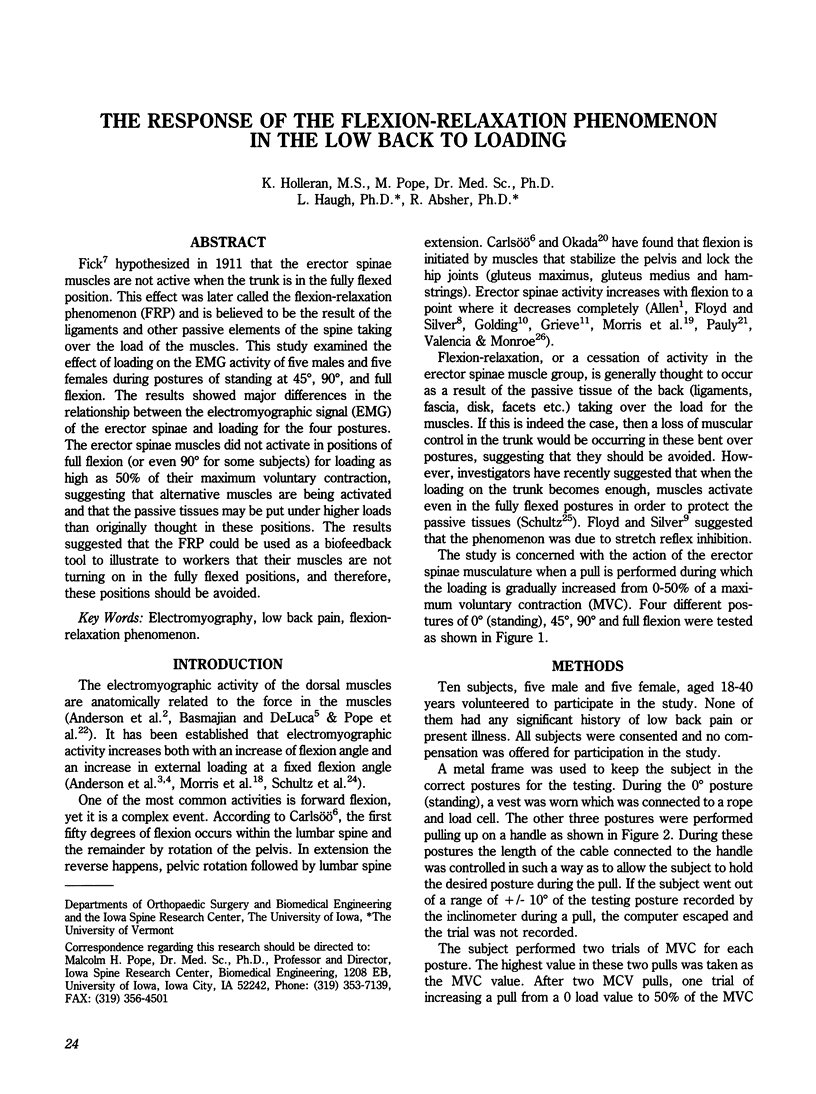
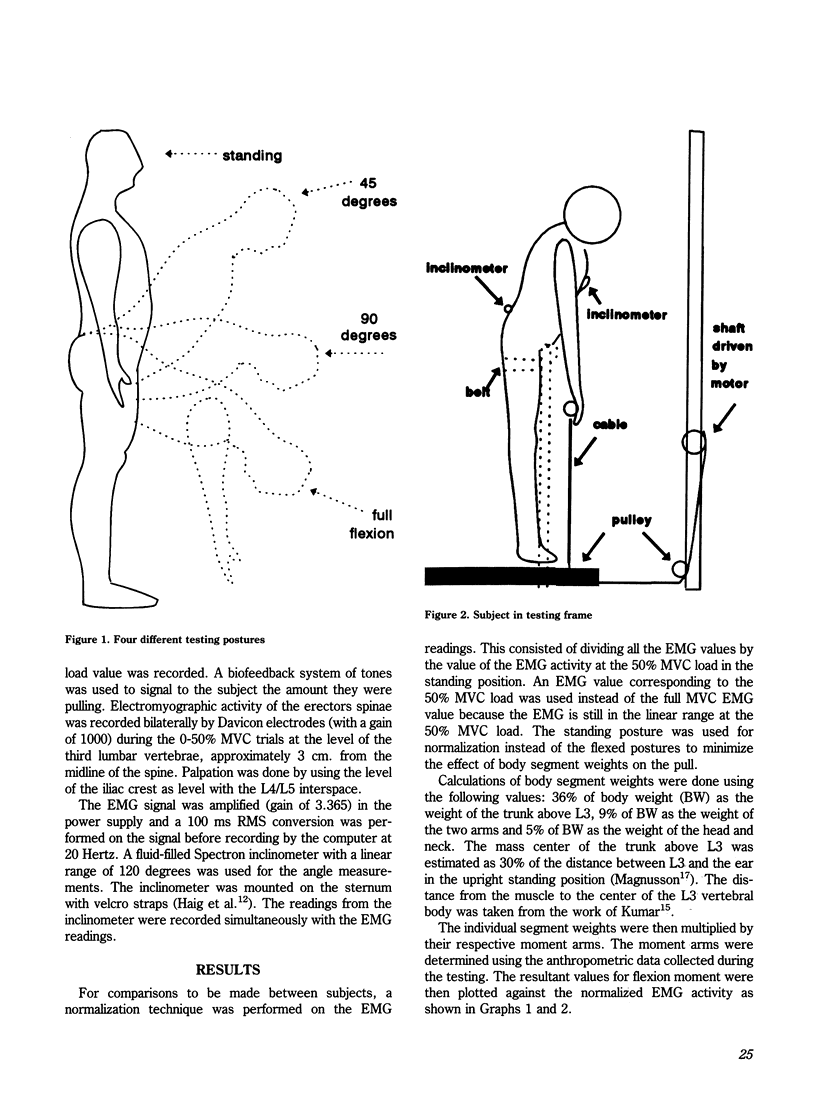
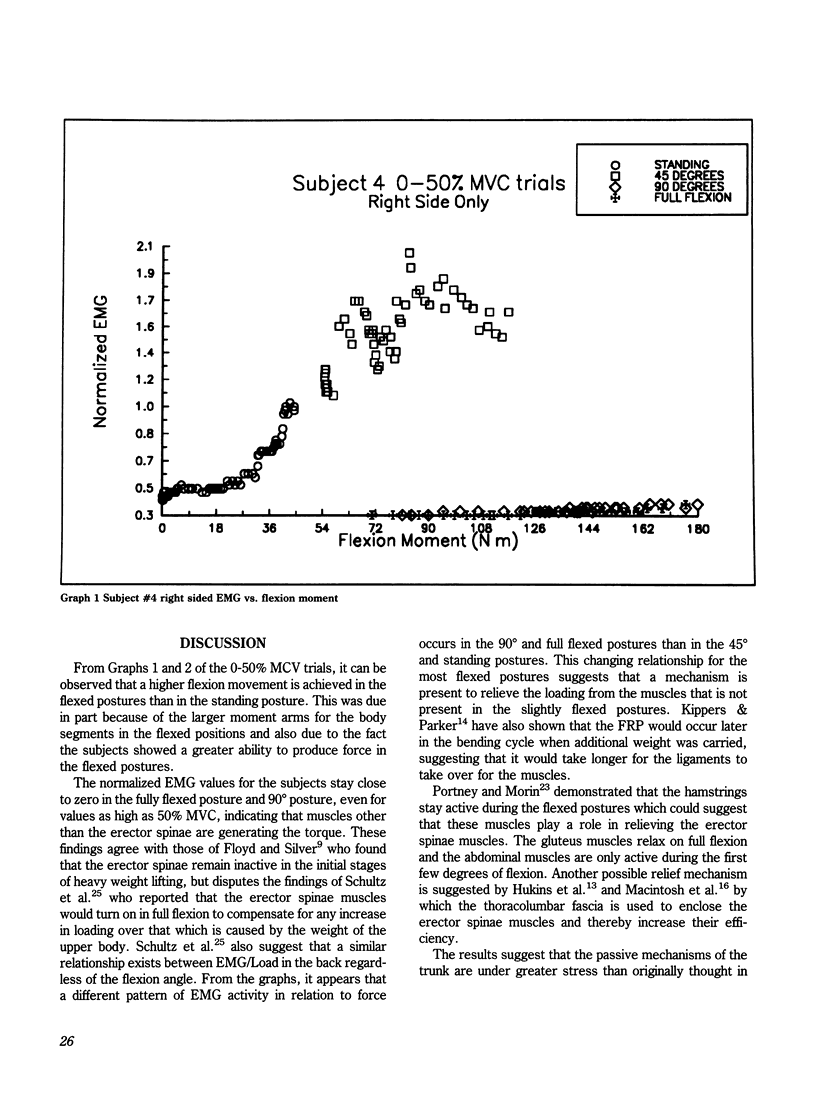
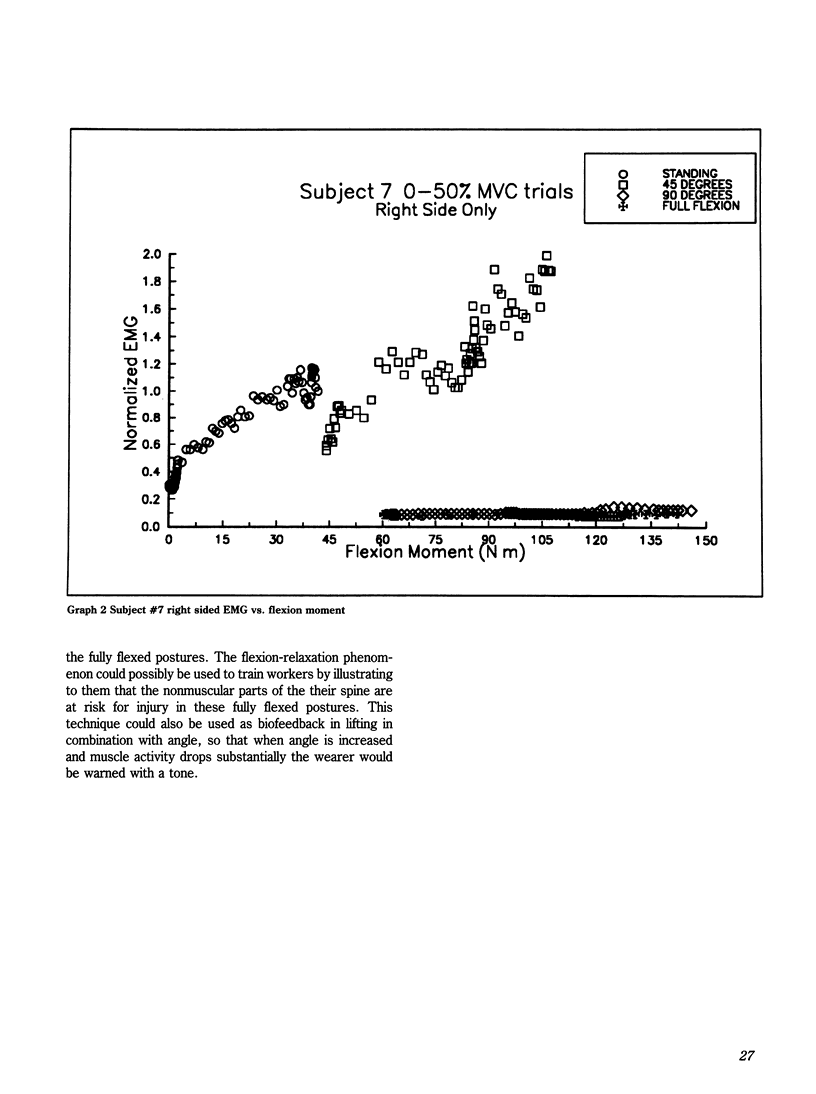
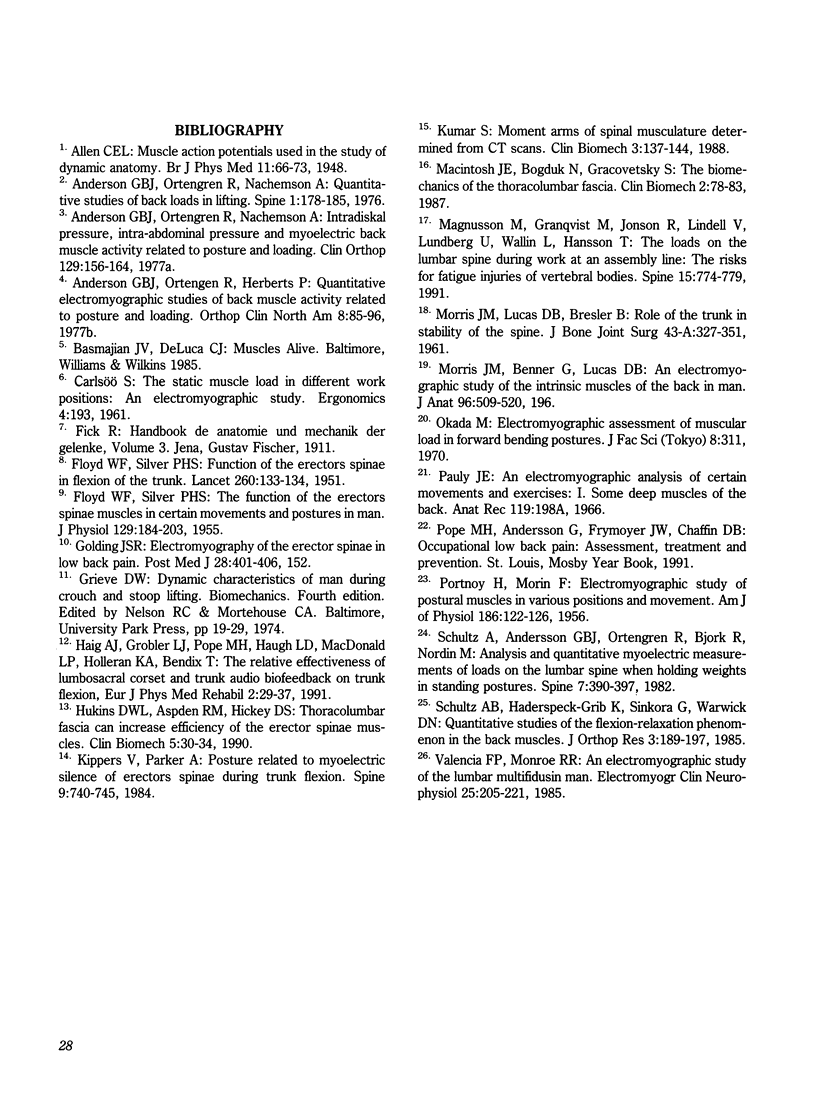
Selected References
These references are in PubMed. This may not be the complete list of references from this article.
- Andersson G. B., Ortengren R., Herberts P. Quantitative electromyographic studies of back muscle activity relatated to posture and loading. Orthop Clin North Am. 1977 Jan;8(1):85–96. [PubMed] [Google Scholar]
- FLOYD W. F., SILVER P. H. The function of the erectores spinae muscles in certain movements and postures in man. J Physiol. 1955 Jul 28;129(1):184–203. doi: 10.1113/jphysiol.1955.sp005347. [DOI] [PMC free article] [PubMed] [Google Scholar]
- GOLDING J. S. R. Electromyography of the erector spinal in low back pain. Postgrad Med J. 1952 Jul;28(321):401–406. doi: 10.1136/pgmj.28.321.401. [DOI] [PMC free article] [PubMed] [Google Scholar]
- Kippers V., Parker A. W. Posture related to myoelectric silence of erectores spinae during trunk flexion. Spine (Phila Pa 1976) 1984 Oct;9(7):740–745. doi: 10.1097/00007632-198410000-00015. [DOI] [PubMed] [Google Scholar]
- MORIN F., PORTNOY H. Electromyographic study of postural muscles in various positions and movements. Am J Physiol. 1956 Jul;186(1):122–126. doi: 10.1152/ajplegacy.1956.186.1.122. [DOI] [PubMed] [Google Scholar]
- Magnusson M., Granqvist M., Jonson R., Lindell V., Lundberg U., Wallin L., Hansson T. The loads on the lumbar spine during work at an assembly line. The risks for fatigue injuries of vertebral bodies. Spine (Phila Pa 1976) 1990 Aug;15(8):774–779. [PubMed] [Google Scholar]
- Schultz A. B., Haderspeck-Grib K., Sinkora G., Warwick D. N. Quantitative studies of the flexion-relaxation phenomenon in the back muscles. J Orthop Res. 1985;3(2):189–197. doi: 10.1002/jor.1100030208. [DOI] [PubMed] [Google Scholar]
- Schultz A., Andersson G. B., Ortengren R., Björk R., Nordin M. Analysis and quantitative myoelectric measurements of loads on the lumbar spine when holding weights in standing postures. Spine (Phila Pa 1976) 1982 Jul-Aug;7(4):390–397. doi: 10.1097/00007632-198207000-00009. [DOI] [PubMed] [Google Scholar]
- Valencia F. P., Munro R. R. An electromyographic study of the lumbar multifidus in man. Electromyogr Clin Neurophysiol. 1985 May-Jun;25(4):205–221. [PubMed] [Google Scholar]


